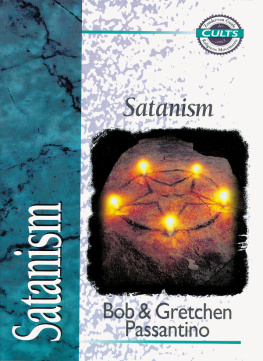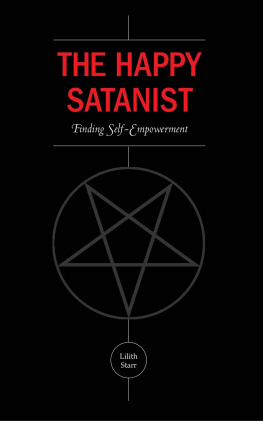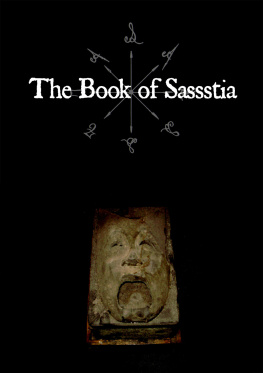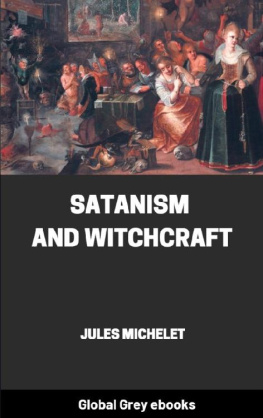First published 1991 by Transaction Publishers
Published 2017 by Routledge
2 Park Square, Milton Park, Abingdon, Oxon OX14 4RN
711 Third Avenue, New York, NY 10017, USA
Routledge is an imprint of the Taylor & Francis Group, an informa business
Copyright 1991 by Taylor & Francis
All rights reserved. No part of this book may be reprinted or reproduced or utilised in any form or by any electronic, mechanical, or other means, now known or hereafter invented, including photocopying and recording, or in any information storage or retrieval system, without permission in writing from the publishers.
Notice:
Product or corporate names may be trademarks or registered trademarks, and are used only for identification and explanation without intent to infringe.
Library of Congress Catalog Number: 2012015845
Library of Congress Cataloging-in-Publication Data
The Satanism Scare / edited by James T. Richardson, Joel Best, and David G. Bromley.
p. cm (Social institutions and social change) Includes index.
ISBN 0-202-30378-0 (alk. paper).
ISBN 0-202-30379-9 (pbk. : alk. paper)
1. SatanismUnited StatesHistory20th century. 2. Satanism United StatesPublic opinion. 3. Public opinionUnited States. 4. United StatesReligion1960- 5. United StatesSocial conditions1980- I. Richardson, James T., 1941- . II. Best, Joel. III. Bromley, David G. IV. Series.
BL2525.S27 2012
133.4220973dc23
2012015845
ISBN 13: 978-0-202-30379-6 (pbk)
James T. Richardson, Joel Best and David Bromley
Why a collection of scholarly articles about contemporary satanism? Many academics would consider the topic unworthy of serious consideration; they equate antisatanism with flying saucer cults, parapsychology enthusiasts, and other causes at or beyond the lunatic fringe. We disagree.
Contemporary antisatanism warrants serious examination, if only because this movements influence now extends into important segments of American society. Long a staple topic for religious broadcasters and trash TV talk shows, satanism has crept into network news programs and prime-time programming, with news stories, documentaries, and made-for-TV movies about satanic cults. Growing numbers of police officers, child protection workers, and other public officials attend workshops supported by tax dollars to receive formal training in combating the satanist menace. Authority figures ranging from New Yorks Cardinal OConnor to federal drug czar William J. Bennett warn against the threat of satanism. The general public has responded to these messages: when a Texas poll recently asked How serious a problem do you think satanism is to our society, if at all? 63 percent of Texans responded very serious, and another 23 percent said somewhat serious.
Satanisma subject of denunciations by media and public figures, and an issue of some concern to a large segment of the general publichas attracted surprisingly little serious attention from social scientists. We believe it is time to address this neglect.
CONSTRUCTING THE SATANIST PROBLEM
This volumes contributors have backgrounds in several of the social sciences, in particular sociology, anthropology, folklore, and history. Each chapter uses its own set of concepts and offers its own stance on satanism as a contemporary social problem. There is, however, a general approach that provides a foundation for the book as a whole. Our perspective toward satanism is constructionist.
Constructionism contrasts with more traditional orientations toward the study of social problems. Traditionally, researchers took for granted the objective reality of their subject mattersay, crime. That is, they made an assumption that the real world contained crimes and criminals, objective phenomena that could be studied. These researchers measured crime rates, searched for the causes of crimes, examined the characteristics of criminals, and so on, never questioning why something was designated a crime or someone was called a criminal. This approach is sometimes called objectivist, because it takes for granted the objective reality of the phenomena under study.
Constructionists criticize objectivism on the ground that our world is socially constructed. There is no natural phenomenon crime; all crimes are identified through social processes. Legislative bodies write criminal codes that define some acts as crimes, and those laws are enforced (that is, interpreted) by police officers, prosecutors, and other agents of the criminal justice system who must ask themselves whether the events they encounter fit the legal definition of crime, and if so, what to do about it. All crimes and criminals are identified through these social processes, and all other social problems are constructed in similar fashion. These processes of social construction are the focus of constructionists attention, as they try to understand the social construction of reality, including social problems.
Most warnings about satanism make objectivist assertionsthat satanic cults conduct human sacrifices; that listeners are influenced by satanic messages backmasked onto heavy metal records, that much child sexual abuse is motivated by satanism, and so on. Social scientists guided by objectivist assumptions might try to study coven members and the effects of listening to backmasked lyrics, or accept at face value sometimes bizarre statements made by allegedly abused children.
In contrast, essays in this volume view the social problem of satanism as a social construction. In this view, warnings about covens, backmasking and ritual abuse should be seen as claims, and, for constructionists, the process of making claims is the essence of social problems. Once the researchers focus shifts to the process of claimsmaking, an entirely new set of research questions emerges, focused on production and validation of claims.
Perhaps the most basic questions for constructionists are: Who is making claims? Why are they making them? What do they say? and How do others respond? Claims about satanism may come from various sources such as preachers and parents, journalists and ex-cult members, therapists and political leaders. Each of these claimsmakers has a distinctive approach to the topic; presumably preachers see satanism in essentially religious terms, while journalists apply the canons of their profession when reporting on alleged satanists and their activities. Claimsmaking therapists may be justifying a new therapeutic practice or diagnosis, and politicians may be seeking political advantage. Obviously, claimsmakers have different audiences (e.g., the preachers congregation, the journalists readers or viewers, the therapists potential clients) and different objectives (e.g., preachers want to win souls, journalists seek to inform, therapists want clients).











